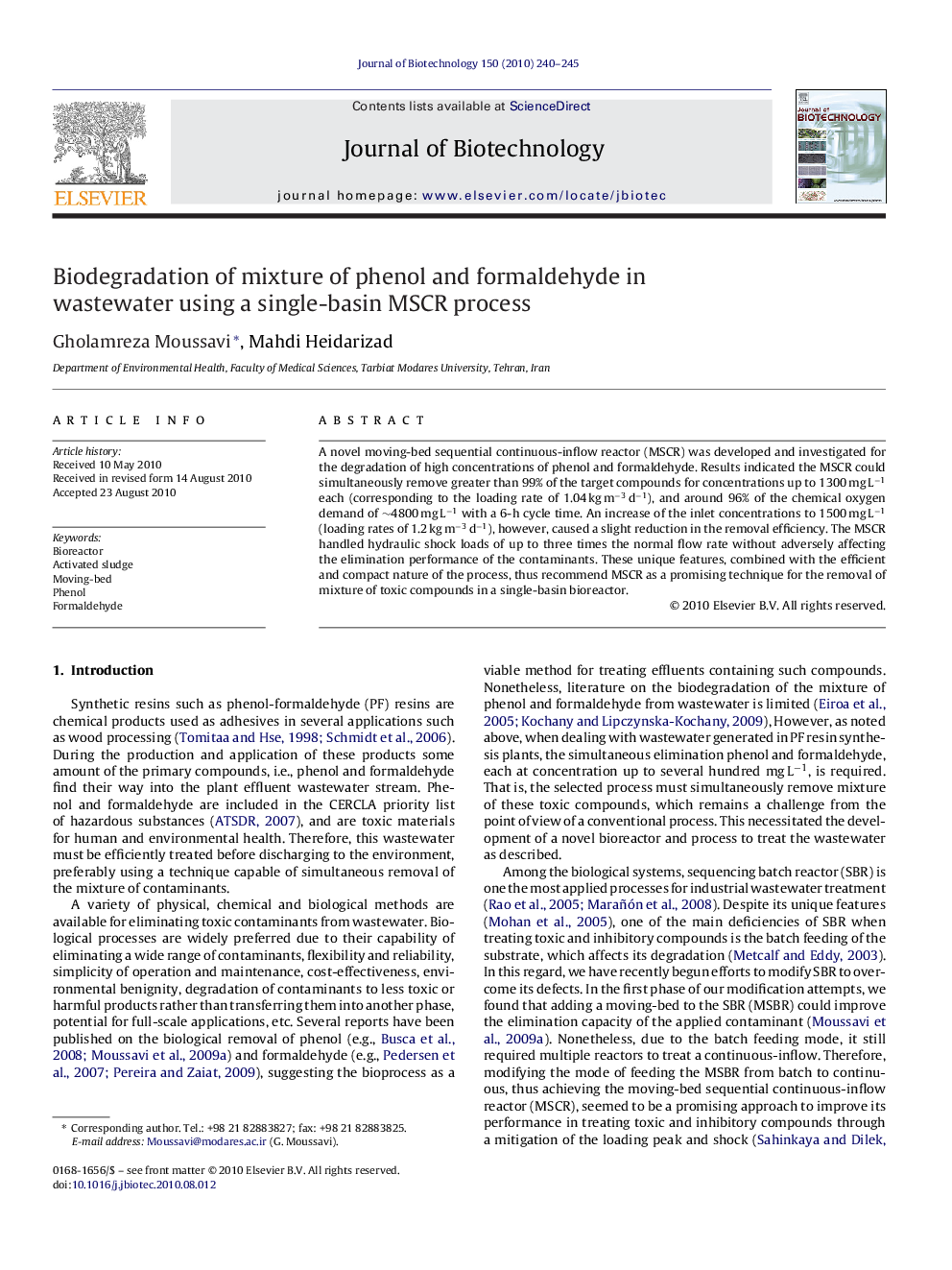| Article ID | Journal | Published Year | Pages | File Type |
|---|---|---|---|---|
| 24008 | Journal of Biotechnology | 2010 | 6 Pages |
A novel moving-bed sequential continuous-inflow reactor (MSCR) was developed and investigated for the degradation of high concentrations of phenol and formaldehyde. Results indicated the MSCR could simultaneously remove greater than 99% of the target compounds for concentrations up to 1300 mg L−1 each (corresponding to the loading rate of 1.04 kg m−3 d−1), and around 96% of the chemical oxygen demand of ∼4800 mg L−1 with a 6-h cycle time. An increase of the inlet concentrations to 1500 mg L−1 (loading rates of 1.2 kg m−3 d−1), however, caused a slight reduction in the removal efficiency. The MSCR handled hydraulic shock loads of up to three times the normal flow rate without adversely affecting the elimination performance of the contaminants. These unique features, combined with the efficient and compact nature of the process, thus recommend MSCR as a promising technique for the removal of mixture of toxic compounds in a single-basin bioreactor.
